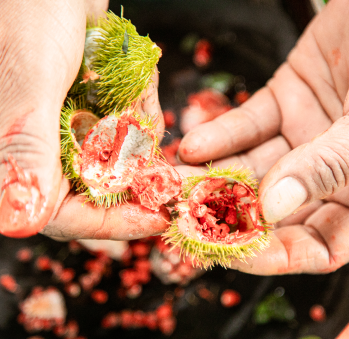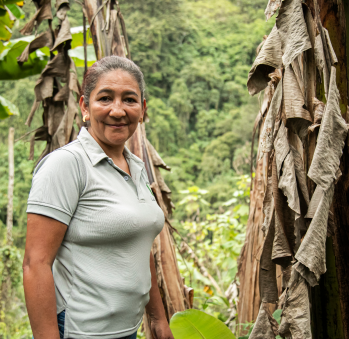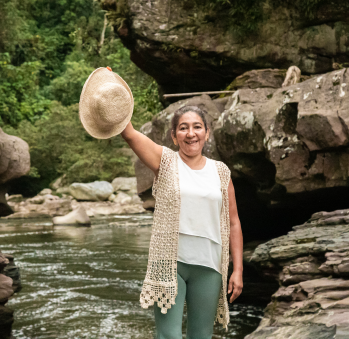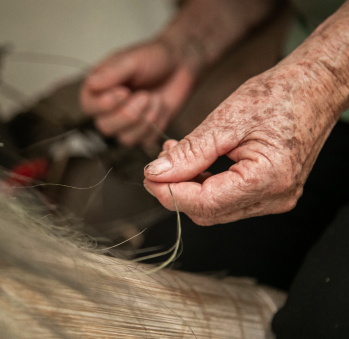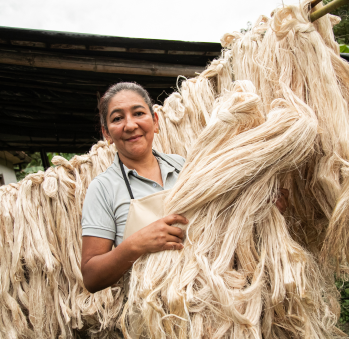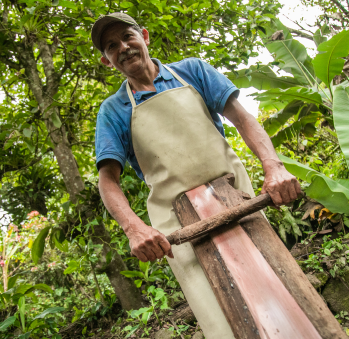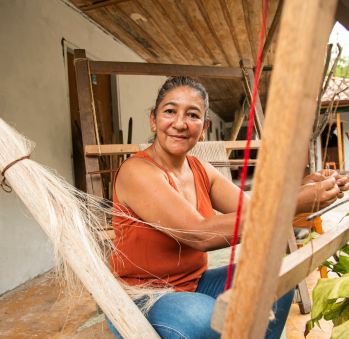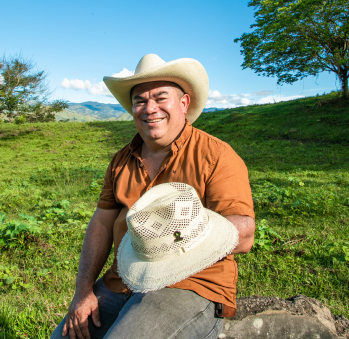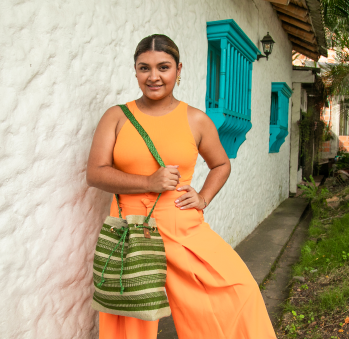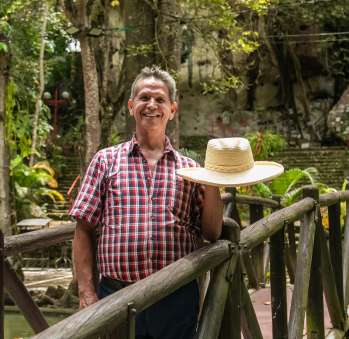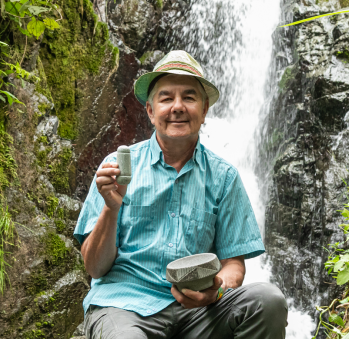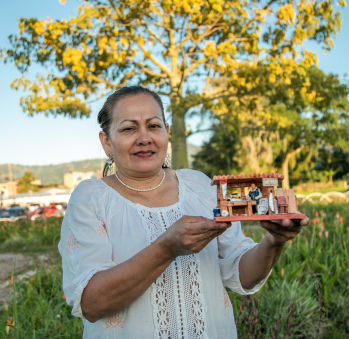Listbina Becerra
Workshop: Libertejidos
Craft: Tejeduría
Trail: Huila Route
Location: San Agustín, Huila
Tracing the origin of an artisanal technique can often be challenging, but for Litsbina Becerra, the birth of her craft is crystal clear in terms of when and how it came to be. We are delving into the realm of weaving with plantain fibers, a process distinct from the weaving technique known as “”calceta de plátano.”” It all began during Litsbina’s childhood when her mother, Clelia Rengifo, was determined to develop a new product for a small fair to be held in Obando, Huila. Clelia came from a family of weavers. Her mother, Guillermina Rengifo, and her grandmother, Abigail Rengifo, were skilled in weaving with the wool from their own sheep. Clelia’s aunt, Jacinta Elvia Rengifo, specialized in hemp fabrics. It was Clelia who came up with the idea of extracting fibers from the layers, known as sajas, that peeled off from the plantain trunk. Her initial attempt resulted in a woven bag that resembled stained hemp.
Back then, they resided near the narrow of the Magdalena River. What followed that first approach to the fiber was a further investigation and improvement of the technique. Clelia’s husband, Onias Becerra, aided in the manual extraction of the material. He scraped the sajas against a plank using bamboo or a blade. The layers needed to be unripe in order for the fibers to reveal. Subsequently, they were cleansed with water and a touch of soap to remove the stains that made them look grimy. The most time-intensive step in the process followed: fastening the fibers to a wooden beam and combing them until all their cellulose was removed—it is necessary to comb it several times and that’s why the threads are expensive. Over time, they discovered that the fibers were susceptible to insect damage and since then they treat the fibers with chili pepper as a form of immunization.
Clelia’s journey of experimentation led her to empirically discover the most efficient methods for processing the fibers, and it’s fascinating. Once prepared, she would either directly affix them to the loom or spin them into threads. She wove an array of items, including mats, tablecloths, bags, and vests. Her work earned her, in 1985, the Artisanal Mastery Medal. Not only did she invent a technique from scratch, but she also passed on her knowledge generously. This selfless craftswoman conducted workshops in Ecuador and Panama, imparting her expertise. Furthermore, she ensured her children were well-versed in the art of plantain fiber crafting, entrusting them to carry forth her legacy before her passing. Among her seven children, Litsbina, Rosario, and Héctor proudly carry their mother’s heritage, preserving it through their work.
Litsbina collaborates with her family and more than forty members of Libretejidos. They all have previously attended their workshops to learn the technique and now work from their own homes, managing their tasks while studying or caring for their children. The specific fiber they work with is soft, resilient, and versatile, and delicate fabrics can be woven with it. Much like her mother, with her inquisitive spirit, Litsbina and her team have experimented by blending plantain fibers with cotton, silk, and copper threads. They’ve also ventured into natural dyeing using materials like walnut trees, coffee grounds, achiote, indigo, and avocado seeds. Their collection of fabrics continues to expand, and it wouldn’t be surprising if they were to venture into weaving viper’s bowstring hemp, as they are already exploring its finer threads.
If you decide to pay a visit to Litsbina, here’s a tip that will enhance your experience: beyond being the torchbearer of her mother’s weaving legacy, she’s also a bearer of Huila’s traditional cuisine. She excels at cooking delectable stone-roasted arepas made from corn and cheese—a skill she learned from her grandmother Guillermina, the very same woman who wove with sheep wool throughout her lifetime.
Craft
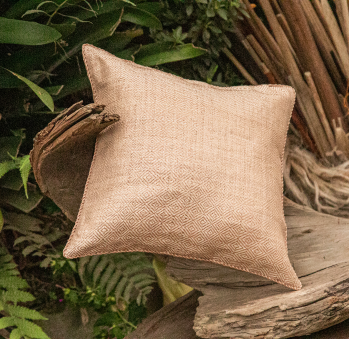

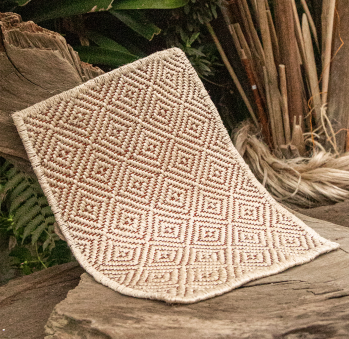
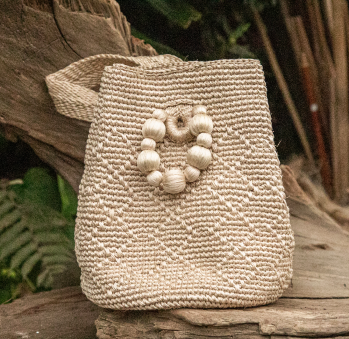
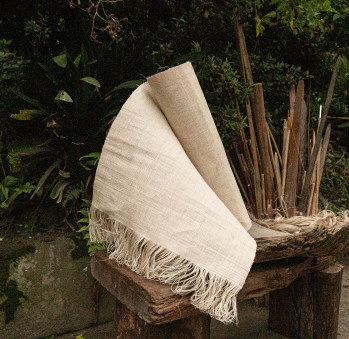







Artisans along the way
Artisans along the way
No puede copiar contenido de esta página








































